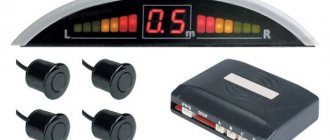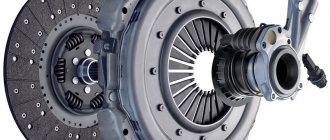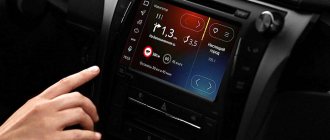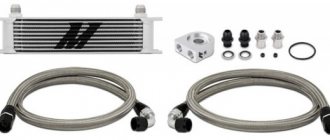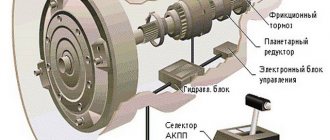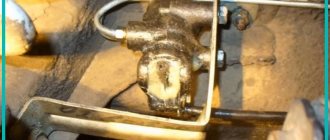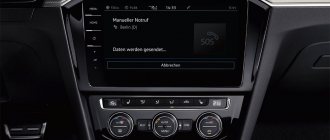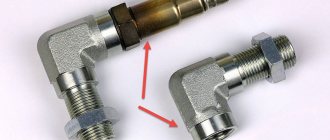After all, Velcro rubber holds onto the road no worse than a studded tread; in addition, it does not damage the asphalt and does not slip on hard surfaces. These advantages brought studless winter tires to first place in the ranking of buyer preferences, where they have remained to this day. But unfortunately, not all drivers who choose exclusively studded models for the winter understand what Velcro tires are (in Russia this is not yet prohibited). Therefore, further in the text we will try to answer the most pressing questions of drivers who want to replace studs with Velcro.
Friction tire - what is it anyway?
A friction model is a winter or all-season type of tire without studs. People call it “Velcro”. This nickname appeared as a result of rumors about the increased adhesion of auto rubber, which supposedly “sticks” to any surface. In fact, Velcro works completely differently.
The studded model bites into the crust or ice with round or rectangular metal inserts. The mechanism of operation of such a wheel is clear to everyone. The friction model is more complex - it clings to the road, snow and ice due to the increased coefficient of friction. Moreover, the increased value of the friction force is provided by three components:
- special rubber - it does not harden in the cold, so it can be pressed (with the weight of a car) even into microcracks in the ice;
- an abundance of small grooves (lamellas) - they drain water, drying the contact patch, preventing aquaplaning;
- a special tread pattern - the absence of spikes is compensated by a complex terrain with many edges that cling to ice, crust and the road no worse than metal inserts.
Increased friction has replaced the studs used in winter tires since the 1930s. This replacement predetermined the main vector for designing tires for cold climates, as a result of which not only asphalt-friendly winter models appeared on the market, but also all-season options suitable for riding at any time of the year.
What is the difference between Velcro and studded tires?
First of all, the absence of thorns. But not all studded models are supplied to the consumer with inserts installed; in addition, metal studs may fall out of the tread. How, in this case, to distinguish Velcro from the studded version without inserts? Very simple - pay attention to the following points:
- Speed index - it should not exceed S, Q or R. They generally do not ride on Velcro at speeds higher than 160-180 km/h.
- Tread pattern - in contrast to large studded checkers, many V-shaped patterns or small squares are cut on the surface of the Velcro. A friction tire grips the road with its tread edges, so its pattern is much finer than that of its studded competitor.
- The density of the transverse sipes - if each square or V-shaped tread element is intersected by dozens of shallow grooves, then you have a 100% friction option.
By controlling these points, you will distinguish any type of Velcro from a studded model, and you will not buy a worn-out wheel with fallen studs under the guise of a friction version.
Buy correctly, don't get confused
In conclusion, I would like to note that many of us confuse the friction tire with the so-called EUROZIN , and then tell everyone that this “Velcro doesn’t work at all,” but this is not entirely true. EUROZIMA is designed for a very mild climate, literally for several days or weeks of not so low sub-zero temperatures, and its operation is also recommended on cleared and well-maintained roads - THIS IS A COMPLETELY DIFFERENT RUBBER. Don't confuse it with real winter!
Now let's watch a short video of the work.
I’ll finish this, I think the article and video were useful to you. Sincerely yours, AUTOBLOGGER.
Similar news
- How are wheels made? Let's analyze an ordinary car + detailed video
- Unwelding. What is it, main pros and cons. How to make a s…
- How to choose winter tires for a car. 8 right steps! Pl...
Add a comment Cancel reply
Types of friction tires
Manufacturers of winter wheels are ready to offer customers only two types of friction models:
- The Scandinavian version - these tires have an aggressive tread pattern with a large number of sipes and clearly defined shoulders. The sides of the tread stand out so clearly that the profile of the Scandinavian model looks like the letter “P”. In addition, for such Velcro tires, the softest tires are selected (50 Shore units), and the speed index of the “Scandinavian” is equal to Q or T.
- European tires - the tread of such models cannot boast of high sipe density and aggressive sides. The shoulders of the European model are more sloping. In addition, in terms of rubber hardness composition (up to 67 Shore units), this option resembles all-season tires. The European speed index is H or V (220 or 240 km/h).
The Scandinavian version has a second name - Arctic (or Alpine) tires. Moreover, some models from this series allow the temporary installation of studs, and the Scandinavian tread pattern is also found on studded tires from some manufacturers. The European version is designed for fast driving on snow-cleared streets and highways. This tire is closer to all-season models than to classic winter tires.
Marking
Sometimes the marking of all-season tires can be supplemented with various icons. Among the additional symbols you can find the inscription “Retread”. The fact is that some kits need to be repaired and the compound is re-fused onto them and the tread is cut. Refurbished products carry this designation. Driving on such tires does not pose any danger, but the tire purchased by the driver will wear out a little earlier. Fortunately, the price is cheaper.
Some car tires and wheels do not fit together, having fundamental differences in design. So, if you are going to change the tires of your car yourself, it is worth remembering that the tube sets must be installed on the corresponding wheels with the designations LK, GK or RK. The symbols LB, GB or RB indicate combination with tubeless type kits (TubeLess).
Tire installation rules regulate the presence of color marks. If there is a yellow triangle icon on the sidewall, then this is the lightest part of the rubber. All you need to do is align it with the mark on the disc. The red dot indicates the hardest point and should also be aligned with the L mark on alloy wheels.
Advantages and disadvantages of Scandinavian Velcro rubber
Scandinavian Velcro are designed for harsh off-road conditions. They will overcome both icy road surfaces and virgin snow. The wavy edges of the “cubes” and V-shaped protrusions of the arctic tread are ready to cling to any unevenness, and the soft rubber literally flows into microcracks under the pressure of the wheel.
Tests of such tires show excellent results on any off-road terrain, and in severe frost they are ready to compete even with studded options. Arctic rubber remains elastic even at -25 °C, so its braking distance will not differ from the result of a studded tread.
So which winter tires are better: friction or studded (Velcro or studs)?
For a winter city, Velcro is best suited. Especially if the roads are always cleaned and treated with reagents. Velcro will help out on off-road roads and in slushy snow.
But for icy conditions, in conditions with very low temperatures, but without snow, the ideal option would be studded tires, which can keep the car on the ice even when driving at high speed.
Winter tire models
- Tires Goodyear UltraGrip Cargo Seasonality: summer Spikes: yes Diameter: 15 / 16 / 17
Read more - Yandex.Market rating: Yandex.Market: 4.5
Goodyear UltraGrip Ice 2 tires
Seasonality: winter Spikes: no Diameter: 15 / 16 / 17 / 18 / 19
More details
- Yandex.Market rating: Yandex.Market: 4.5
Goodyear UltraGrip Ice SUV Tires
Seasonality: winter Spikes: no Diameter: 16 / 17 / 18 / 19 / 20 / 21
More details
- Yandex.Market rating: Yandex.Market: 4.5
Goodyear UltraGrip Ice+ tires
Seasonality: winter Spikes: no Diameter: 15 / 16 / 17
More details
- Goodyear UltraGrip Arctic 2 tires
Seasonality: winter Spikes: yes Diameter: 16 / 17 / 18 / 19
More details
- Yandex.Market rating: Yandex.Market: 4.5
Goodyear UltraGrip Performance Gen-1 Tires
Seasonality: winter Spikes: no Diameter: 16 / 17 / 18 / 20 / 21
More details
- Yandex.Market rating: Yandex.Market: 4
Goodyear UltraGrip Performance 2 Tires
Seasonality: winter Spikes: no Diameter: 16 / 17 / 21
More details
- Goodyear UltraGrip Ice 2+ tires
Seasonality: winter Spikes: no Diameter: 17 / 19 / 20
More details
The weak point of the “Scandinavians” is that the tires are too soft. The tread of such a tire wears out faster than that of a European tire; in addition, a tire that is too soft begins to “walk” on hard surfaces. Drivers note slow reactions to turns and sudden maneuvers when moving from virgin snow to asphalt.
Scandinavian tires are designed for trips outside the city, on snowy streets or highways. There is nothing to do in the city with such tires.
see also
- Winter tires in Elets shin shinich
- Winter tires for Mercedes E class
- Winter tires for Kia Rio 2010
How to change tires for winter correctly- Opel Vectra with winter tires
Winter tire tests 215 65 r16- Winter tires bridgestone ice cruiser 5000
- Winter tires for Mitsubishi Pajero Sport
- Winter tires for Volkswagen Polo 2017
- Winter tires hankook 205 55 r16
- Winter tires are mandatory from December 1st
Pros and cons of European Velcro tires
European Velcro is the best tire for a slushy winter. It differs from the Scandinavian one in that it has an almost summer tread pattern. Rounded shoulders, a dense arrangement of cubes and V-elements, a solid sidewall and an abundance of water-draining slats - all this allows the “European” to move along a winter road at summer speeds (over 200 km/h) without losing traction.
Tests of such tires show similar performance results between European wheels and all-season wheels. Between -5 and 7°C they have approximately the same braking distance and similar resistance to hydroplaning. However, at low temperatures, the “European” tire outperforms any all-season tire, demonstrating better handling and minimal braking distance even at -20 °C.
The disadvantage of "European" tires is the relationship between the braking distance and the type of surface - on ice or on a snowy road, these tires do not feel as confident as on wet or dry asphalt. They have too much rubber hardness for extreme roads.
European tires are bought for driving around the city. Moreover, they can be installed as early as September - they do not “walk” on paved roads even at 15-17 °C.
How to choose a Velcro tire for a specific car model
When choosing a tire for a specific brand of car, the following criteria are used:
- Fitting diameter - it should not differ from the same parameter of the disk by more than 1 inch.
- The width of the tire - it must correspond to the distance between the sides of the rim.
- Profile height - for winter it is better to choose models with a coefficient of more than 60%. Such tires are not afraid of potholes and off-road conditions.
- Load capacity index - in this case, it is better to buy a model with a margin of 15-20%, covering the consequences of possible overloading of the machine.
- Speed index - when choosing winter tires, keep in mind that this parameter indicates the maximum driving speed, and the actual value of such an index should be no more than 80% of the maximum.
When choosing the type of tread pattern, you should give preference to asymmetrical options. Such a tire has an inner edge designed for driving on ice, and an outer edge for driving on dry roads. If you are not going to leave the city, pay attention to the symmetrical directional tread patterns. Tires with this pattern resist wet snow and asphalt better than other models.


